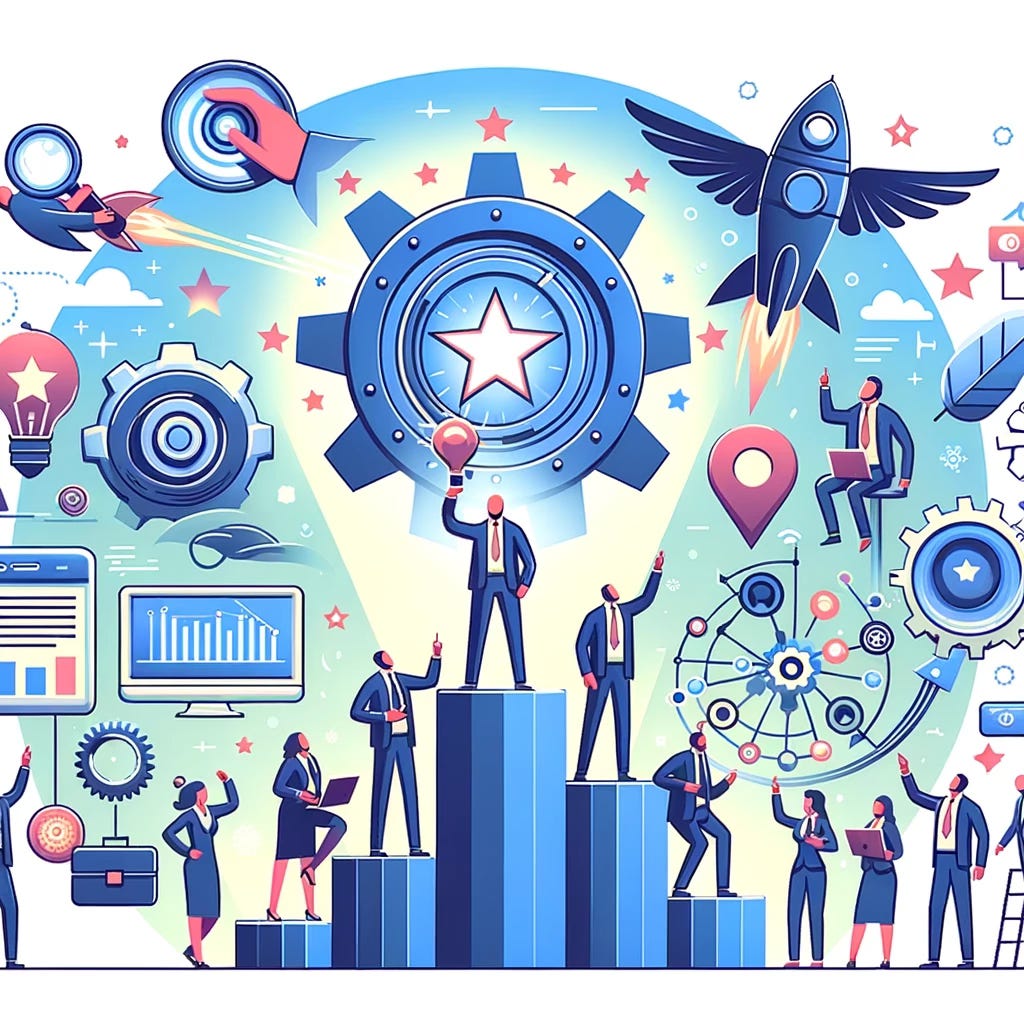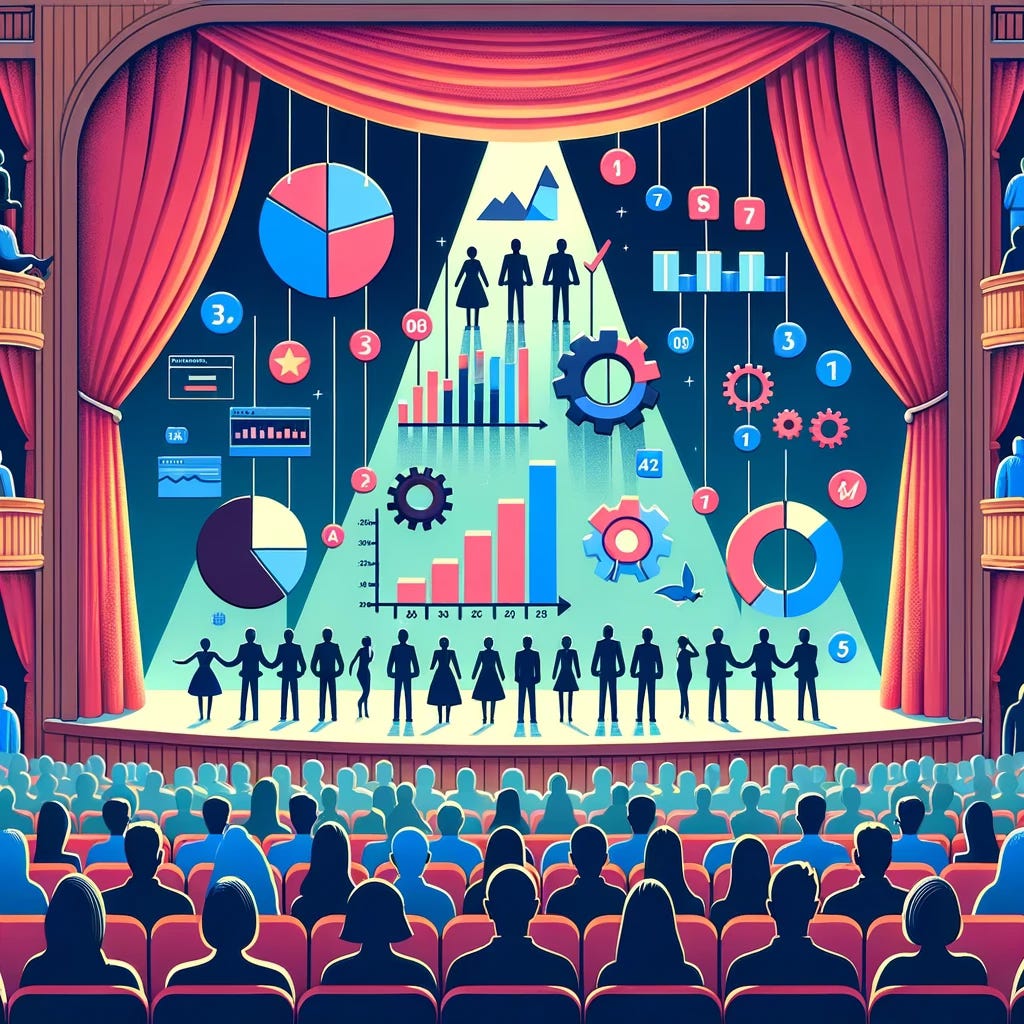The Art of Data Storytelling: A Guide for all in Tech
Why Storytelling with Data is Key to Communicating Effectively 🗝️
The Power of Narrative
In the realm of software engineering and tech leadership, data is often the backbone of decision-making processes. However, data in its raw form can be overwhelming and difficult to interpret. This is where the power of narrative comes into play. According to neuroscience research, our brains are wired to understand and retain stories. A study published in the Journal of Cognitive Neuroscience found that storytelling activates various parts of the brain, including areas that process language, emotions, and even smells and textures. This multi-sensory engagement makes the information more memorable and impactful.
Case Study: Netflix's Data-Driven Success
Netflix is a prime example of a company that has mastered the art of data storytelling. They use data visualizations to not only understand viewer preferences but also to tell a compelling story to their stakeholders. This data-centric approach has been instrumental in their success, allowing them to tailor content and marketing strategies effectively.
Example for Tech Leaders: Imagine you're presenting quarterly performance metrics to your stakeholders. You could either show a series of pie charts and bar graphs, or you could craft a narrative. Start with the challenges the company faced at the beginning of the quarter, move on to the strategies implemented, and conclude with the outcomes, all the while using data visualizations to support your story. The latter approach not only makes the data more relatable but also actionable, as it provides context that can guide future strategies.
Quote from Industry Expert: "Data storytelling is a methodology for turning data and insights into action through a well-placed narrative." - Brent Dykes, Forbes Contributor and Data Storytelling Evangelist.
The Demand for Data Storytelling
As the tech industry evolves, the demand for professionals who can not only interpret data but also communicate it effectively is on the rise. According to the Bureau of Labor Statistics, there is a projected 25% growth in the demand for research analysts and other data-centric roles. But what sets you apart in this competitive landscape is your ability to tell a compelling story with data. Many companies, especially those aligned with Product-Led Growth (PLG) strategies, are now listing data storytelling as a desired skill in job descriptions.
Reference for Software Engineers: A Gartner report highlighted that by 2025, data storytelling will be a prerequisite for data analysts at all levels. This trend is not limited to analysts; software engineers are also expected to articulate the impact of their code, features, or algorithms through data. Being able to do so effectively can make you an invaluable asset to your team and organization.
Reference for Product Managers: As per a PMI article, storytelling is becoming a key skill for Product Managers. It helps in presenting data in a way that can guide product development and feature prioritization.
How to Order Information for Maximum Impact 📈
Setting the Scene
Case Study: Spotify's User-Centric Data Presentation
Spotify often presents its year-end data to users in a storytelling format, showing listeners their most-played songs, genres, and more. This user-centric approach not only engages the audience but also makes the data more relatable and actionable.
In the world of Agile development and rapid iterations, the ability to convey information efficiently is paramount. The first step in any data storytelling endeavor is to set the scene. This involves providing context and background information that will help your audience understand the data you're about to present. It's akin to the "Introduction" and "Background" sections in a research paper or a sprint planning meeting where the goals and user stories are laid out.
Example for Software Engineers: Suppose you're tasked with presenting the performance metrics of a new feature release. Instead of jumping straight into the numbers, start by explaining the problem the feature aims to solve, the user stories it addresses, and the KPIs you're tracking. This sets the stage for the data and makes it more relatable to both technical and non-technical stakeholders.
Reference: A Tableau article suggests that setting the scene is crucial for engagement. It helps the audience understand what they're looking at, why they should care, and what the data aims to convey.
Quote from Industry Expert: "The best data storytellers aren't those who have mastered the data, but those who have mastered the story." - Cole Nussbaumer Knaflic, author of "Storytelling with Data".
Technical Depth: The Importance of Data Contextualization
In software engineering, data often comes from various sources like logs, user feedback, and analytics tools. Contextualizing this data is crucial for effective storytelling. For instance, a spike in user activity could be due to a new feature release, a marketing campaign, or even a bug causing users to refresh a page multiple times.
Reference for Product Managers: A Mind the Product article emphasizes the importance of context in data for Product Managers. It helps in understanding not just the 'what' but also the 'why' behind the data, aiding in better decision-making.
The Conflict and Resolution
Airbnb faced a significant challenge with building trust between hosts and guests. They used data storytelling to identify key trust factors and implemented features like verified IDs and reviews. This data-driven approach significantly improved user trust and engagement.
Example for Tech Leaders: Imagine you're facing increased system downtimes, and you need to present a plan to the C-suite. Introduce the conflict by showing the impact of downtimes on customer satisfaction and revenue. Then, present the resolution by showing how implementing DevOps practices can reduce downtimes, backed by data from other organizations that have successfully done so.
Reference for Product Managers: According to a ProductCoalition article, understanding the conflict and resolution in data can help Product Managers prioritize features and make data-driven decisions more effectively.
Reference: An article on Medium by a Tableau Zen Master emphasizes the importance of having a conflict and resolution in your data story. It adds drama and makes your presentation more engaging.
How to Choose the Right Visualization for Your Story 🎨
How to Choose the Right Visualization for Your Story 🎨
Understand the Task at Hand
Case Study: Google's Use of Heatmaps for User Experience
Google uses heatmaps to understand where users most frequently click on their search engine page. This simple yet effective visualization helps them continuously refine and optimize the user experience.
Example for Software Engineers: If you're trying to show how latency has changed over time after optimizing an API, a line chart would be more effective than a pie chart. The line chart can clearly show the trend and make it easier for stakeholders to understand the improvements.
Quote from Industry Expert: "The goal is to turn data into information, and information into insight." - Carly Fiorina, former executive, president, and chair of Hewlett-Packard Co.
Technical Depth: The Rise of D3.js
D3.js is a JavaScript library that allows you to create data visualizations right in the browser, offering great flexibility and control. For those who want to go beyond basic charts, D3.js allows for highly customizable and interactive visualizations.
Reference for Product Managers: A Forbes article emphasizes that Product Managers can benefit from using the right visualizations to present user engagement metrics or feature adoption rates. It can help in making data-driven decisions for feature prioritization.
Keep it Simple
Case Study: Apple's Minimalistic Approach to Data
Apple is known for its minimalistic design approach, and this extends to how they present data. Their use of clean, simple visualizations in their keynotes makes the data easily digestible and focuses the audience's attention on what's important.
Example for Tech Leaders: If you're presenting to the board, a simple bar chart comparing quarterly revenues might be more effective than a complex 3D surface plot. The simpler visualization is easier to understand and less prone to misinterpretation.
Reference for Product Managers: According to a Harvard Business Review article, simplicity in data visualization is key for Product Managers. It aids in clearer decision-making and is easier for different departments to understand, ensuring that everyone is on the same page.
Conclusion and Actionable Insights 🏁
In the fast-paced world of technology, mastering the art of data storytelling is not just a skill but a necessity. It's a multidimensional approach that involves understanding your audience, setting the context, choosing the right visualizations, and crafting a compelling narrative.
Actionable Insights 🛠️
Leverage Tools: There are numerous tools available that can help you create compelling visualizations. From Tableau to Python libraries like Matplotlib, choose the one that best suits your needs.
Collaborate: Data storytelling is often a collaborative effort. Work closely with data analysts, designers, and other stakeholders to craft a compelling story.
Keep Learning: The field of data visualization is always evolving. Stay updated with the latest trends and tools to keep your skills sharp.
Seek Feedback: After any presentation, seek feedback to understand what worked and what didn't. Use this feedback for continuous improvement.
📣If you found this guide on the art of data storytelling valuable, don't forget to share it with your network. Are you implementing data storytelling in your role? I'd love to hear your experiences and challenges. Leave a comment below or reach out on LinkedIn. Let's elevate the narrative around data in the tech industry together!
🚀I provide an Engineering-Leader-as-a-Service to StartUps and ScaleUps
🏅I mentor aspiring and experienced Engineering Leaders
💡I write about Startup Life & Engineering leadership
👉 View my profile to find out more: Serdar Mustafa on LinkedIn







